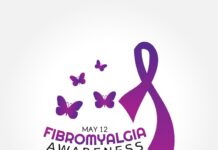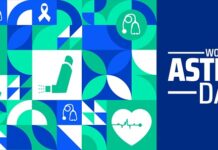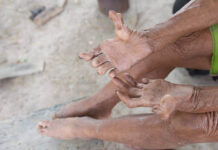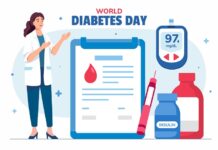Abstract
Fall and fall-related disabilities are a cause of concern in the older population as there is a high prevalence of falls in the older age group. It has an impact on a person’s mobility, independence, and quality of life. It increases the cost of health concerns and the well-being of a person. It is necessary to create public health awareness amongst the elderly population about the risk of falls, and the need to prevent them and motivate them to take action by taking guidance from a multi-disciplinary team of professionals.
Keywords: Fall, Fall Risk, Risk assessment, Risk Awareness, Action
Conflict of Interest: None declared
Source of Support: None declared
Introduction
Improving health, well-being, and independence, reducing falls, is a public health priority. Fall Prevention Awareness Day is observed on 22nd September and is dedicated to educating and empowering individuals about preventing falls, especially among older adults.
A fall is defined as an event that results in a person coming to rest inadvertently on the ground or floor other lower level. (WHO 2007). It can also be defined as a “sudden, not intentional, and unexpected movement from an orthostatic position, from seat to position, or from clinical position.” [1] Falls are one of the leading causes of disability among elderly persons. The phenomenon of falls is recognized globally as a major public health issue. India is the second most populated country in the world, and the number of older adults aged ≥60 years is projected to increase to 198 million by 2030 and 323 million by 2050.[2] A recently conducted systematic review to evaluate the burden of falls in an Indian population concluded that the prevalence of falls across all age groups is 31%.[3] Previous systematic reviews have reported the prevalence of falls among older adults in India to be around 26% to 37%.[2] This higher prevalence of falls in the older age group along with India having a higher percentage of the aging population makes fall prevention an extremely important topic to be discussed.
Causes/Risk Factors for Falls
Falls lead to moderate to severe injuries, fear of falling, loss of independence, and death. Falls by themselves place a huge financial burden on the patient and this does not even include the other expenses that are caused by the consequence of this fall, intangible losses such as inability to move, loss of confidence, dignity, and independence. The major risk factors for falls are impaired balance and gait, polypharmacy, and a history of previous falls. Other risk factors include advancing age, female gender, visual impairments, cognitive decline especially attention and executive dysfunction, and environmental factors.[4] Many people who have falls get completely bedridden and dependent; this places a huge burden on all aspects of a person’s life. It affects their activities of daily living (ADL),
1 Head of Adult and Child Development Unit, Kasturba Health Society-Medical Research Centre, Mumbai, India.
2 Adult and Child Development Unit, Kasturba Health Society-Medical Research Centre, Mumbai, India.
Corresponding Author: Dr. Mona Shah,Head of Adult and Child Development Unit, Kasturba Health Society-Medical Research Centre, Mumbai, India. Email : monashah3@hotmail.com
their independence in the house and in the community, and reduces their mobility. People of an older age group are at a higher risk of having falls as compared to a younger population because they have a lower capacity to tolerate changes in position which leads to orthostatic hypotension.
They have simultaneous presence of co-morbidities and pathologies that affect their balance and they are on multiple drugs with possible side effects. The probability of falling increases with age and is highest after 65 years of age; the probability of falling once a year is 30% after 65 years of age which increases to 50% at 80 years of age.[4] Balance impairment is one of the major contributors to falls in older adults. Sensory integration and motor planning are extremely important to maintain balance. All the different sensory systems need to be integrated so that a person knows the body’s position in relation to the environment and its surroundings following which the brain makes a motor plan and generates responses that control the body’s position. The sensory systems that are needed to maintain balance are the visual system, peripheral sensations, and vestibular system, whereas motor control requires intact muscle strength, neuromuscular control, and reaction time. Higher-order neurological systems are needed to form the links between the sensory and motor systems. Hence, maintaining balance is an extremely complex task. As age progresses, the sensory and motor systems both show a decline in structure and function thereby leading to impaired balance and falls.[2]
Consequences of Fall
Falls have a variety of consequences on a person’s life. They harm physical health by causing injuries and fractures, which in turn makes the patient bedridden and hampers their psychological health in a way that leads to depression and fear of falls; both these factors cause a decline in the health-related quality of life. Falls also have social consequences because they decrease social interaction and lead to isolation. Economic consequences are due to an overall increase in healthcare costs. All these consequences take a toll on the person’s long-term quality of life.[2]
Evaluation of Fall
Falling down is globally the number-one health problem and a common problem of evaluation by healthcare professionals.[1] While there is enough awareness in the community about blood pressure and sugar levels, there is not enough awareness regarding falls, and balance is something that can be quantified and assessed. There are professionals who are trained to assess and manage falls. There are scales and outcome measures that can measure your risk of falls or fear of falls and monitor your progress post-intervention. You can contact a trained professional to get an evaluation done for balance, evaluate the risk factors to know whether further evaluation will be required, formulate a treatment plan, and work towards improving balance. A complete fall evaluation includes a detailed medical history, history of medications that the patient is on, co-morbidities, risk factor evaluation such as bone density evaluation, vision assessment, and assessment of sensory system. A detailed physical examination of all the systems- neurological, musculoskeletal, and cardiovascular should be taken. Environmental evaluation is important to prevent falls as well as manage a patient who has had a fall. Evaluating the patient’s ability to perform ADL and a psychological evaluation to assess the fear of falls is important.
Outcome Measures to Assess Fall
There are over 30 evaluation tools available for assessing balance.[5]The scales that are commonly used for evaluating balance in the clinical setting are as follows: Berg’s Balance Scale, Balance Evaluation Systems Test, the timed up and go Test, sit to stand test, Tinetti balance scale, falls efficacy scale, activities specific balance scale, short physical assessment battery, and dynamic gait index. All of these scales measure balance, fear of fall, or the risk of fall. They can be used to determine who needs intervention to manage falls and how much improvement is seen post-intervention.
Management of Fall Prevention
A multi-disciplinary approach is required for fall prevention. A team consisting of primary physicians, physiotherapists, occupational therapists, podiatrists, and counselors.
Primary Physician
A primary physician would do a detailed medical checkup including a history of medications that the patient is on.
Physiotherapy in Fall Prevention
There is now strong evidence for the effectiveness of exercise in the prevention of falls in community-dwelling older people. Exercise is an obvious choice as a fall prevention intervention because impaired muscle strength and poor postural control are known to increase the risk of falling and are amendable to change with exercise. Exercise is the most highly-researched fall prevention intervention.[6] A physiotherapist needsto work on postural control, strength, endurance, balance, and gait. Research has shown that there is a better improvement when a program is designed to work on all of these components rather than just one domain. A treatment protocol would include exercises to improve mobility, strength, and endurance, graded reaching exercises, stepping exercises, gait training exercises, and functional training. It is important to build tailor-made protocols suiting each individual patient, according to their requirements. Progression should be given in a systematic manner and monitored correctly. Interventions only focussing on walking have not been shown to be effective instead they increase the number of falls thereby putting the person at higher risk.[6] Once the person is comfortable and confident about balance, then group classes might help in a way that it gives them a sense of community, of not being alone in this and a support group. This will help elevate their mood, give them something to look forward to, and reduce their overall risk of fall.
Role of Occupational Therapy
With the help of an occupational therapist, older adults can take steps to reduce fall risk and safely increase their involvement in activities they value. An occupational therapist can help by recommending assistive devices that can help you keep steady and reduce the likelihood of falls.[7] Improving behaviour to change daily activities, modifying your home environment, and improving physical activity to safely perform daily activities. A goal of an occupational therapist is to enable clients to continue functioning in all meaningful activities.
Role of Podiatrist
Biomechanical assessment, footwear assessment, and custom foot orthotics by podiatrists help to improve postural stability and in reduction of falls.
Psychological Intervention
The impact of falling, fear of falling, and social isolation in older adults need focused intervention strategies.
Impact on industry
The industry has an opportunity to develop more accessible and usable devices to reduce injury from falls e.g., hip protectors and force-reducing flooring. Implementing these evidence-based interventions effectively prevents falls and reduces injuries due to falls, as well as significantly decreases health care.[8]
Conclusion
The purpose of this article is to highlight the need to increase community awareness of fall prevention, assess the risk of falls, and approach the correct channels to work on preventing falls. A shift in the focus from just being aware to actually taking action and taking control of one’s own quality of life is extremely important to avoid dependence and morbidity.
Acknowledgements
The authors wish to thank Dr. Ashok B Vaidya, Prof. Emeritus and former Research Director, Kasturba Health Society-Medical Research Centre for valuable guidance and constant inspiration. The authors are also grateful to Dr. Shobha Udipi-Head and Research Director, Kasturba Health Society-Medical Research Centre for her constant encouragement. Our gratitude and thanks to Mr. Dhirubhai Mehta, President of Kasturba Health Society for his wholehearted support and patronage.
References
- Strini V, Schiavolin R, Prendin A. Fall risk assessment scales: A systematic literature review. Nursing Reports 2021;11:430–43. doi:10.3390/nursrep11020041.
- Biswas I, Adebusoye B, Chattopadhyay K. Health consequences of falls among older adults in India: A systematic review and meta-analysis. Geriatrics 2023;8:43. doi:10.3390/geriatrics8020043.
- Kaur R, Kalaivani M, Goel A, Goswami A, Nongkynrih B, Gupta S. Burden of falls among elderly persons in India: A systematic review and meta-analysis. The National Medical Journal of India 2020;33:195. doi:10.4103/0970-258x.316253.
- Ambrose AF, Paul G, Hausdorff JM. Risk factors for falls among older adults: A review of the literature. Maturitas 2013;75:51–61. doi:10.1016/j.maturitas.2013.02.009.
- Soubra R, Chkeir A, Novella J-L. A systematic review of thirty-one assessment tests to evaluate mobility in older adults. BioMed Research International 2019;2019:1–17. doi:10.1155/2019/1354362.
- Sherrington C, Tiedemann A. Physiotherapy in the prevention of falls in older people. Journal of Physiotherapy 2015;61:54–60. doi:10.1016/j.jphys.2015.02.011.
- Occupational therapy in the Prevention and management of falls in adults: Practice guideline. London: Royal College of Occupational Therapists; 2020.
- Sleet DA, Moffett DB, Stevens J. CDC’s research portfolio in older Adult Fall Prevention: A Review of Progress, 1985-2005, and Future Research Directions. Journal of Safety Research 2008;39:259–67. doi:10.1016/j.jsr.2008.05.003.























